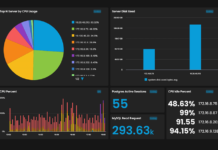When people think about technology and innovation, they typically consider artificial intelligence, computer vision, robotics, autonomous vehicles, or a combination thereof. They don’t usually think about gas, electricity, or telecommunications, but perhaps they should. This is where we’ll break down the benefits of digital construction management.
The electricity that powers our homes, the gas that helps feed our families, the phone and internet services that connect us to friends – society relies upon these sources of power and communications to function in an increasingly hi-tech world.
When that stability comes into question, life comes to a grinding halt. This became clear last year at the start of the pandemic as the skies closed and staying at home became the norm. Suddenly, consumer demand surged and pushed the need for innovation further than ever before.
The Value of Digital Construction Management
For decades, utility companies relied upon paper-based methods for collecting field data and creating paper sketches for infrastructure designs. These are usually fraught with human errors and time-consuming processes as field crews, contractors, supervisors, and inspectors exchange emails and phone calls to confirm design changes, verify project statuses, and reconcile materials.
With the advent of Digital Construction Management (DCM), manual work methods have been replaced with sophisticated digital systems. Utility leaders can transform paper as-builting into a digital process by automating data collection with high accuracy GPS receivers and barcode scanners.
Having worked with some of the leading utility companies in the US, Europe, and Latin America, we have been able to identify the top benefits of DCM technologies.
The Top 4 Benefits of DCM Technologies
Gas, electric, telecommunications, and water utilities are beginning to move away from how they worked for nearly a century to using cloud-based solutions and mobile platforms. This has created more value for both their organizations and the consumers who rely on their services.
1. Real-Time Field Visibility
Before DCM, utilities often based decisions on partial or speculative information. Missing or inaccurate data hindered the ability to employ intelligent decision-making with confidence and certainty.
Today, advanced DCM platforms equip project managers and supervisors with real-time field visibility so they can see which assets are being installed, precisely where assets are located, the approved materials being used for each task, and more.
Mobile applications used in the field seamlessly integrate with web-based applications used in the back office. Everything is synced to the cloud for real-time operational awareness.
2. A Digital Twin for Advanced Systems
Grid modernization is a key focus for government and utility leaders, as old infrastructures around the world can no longer support the current – and rising – level of consumer demand. Modern systems require modern technologies.
Sophisticated systems such as Distributed Energy Resources (DER) and Advanced Distribution Management System (ADMS) can improve power efficiency and reliability. To do so effectively, they require a Digital Twin, which in turn, requires high quality data.
Utilities can use DCM technologies to provide them with high fidelity data to serve these advanced systems and build a more modern grid.
3. Remote Inspections
DCM shines a light on an often-neglected stress point for utilities – the need for inspectors to complete work on multiple projects in multiple locations.
With the pandemic prioritizing the need for minimizing physical interactions and ensuring employee safety, DCM technology allows inspectors to complete their work remotely, without the need to be physically on site. Inspectors can review project alerts and photos from the field through a web application without ever stepping foot outside.
4. Faster Revenue Realization
By providing a single digital platform that unifies all construction data together, DCM ensures that project close outs are completed faster. Reduced time in the field, reduced costs, real-time reporting, automated material reconciliation – all of these benefits have a direct impact on revenue realization.
In addition to providing utilities with state-of-the-art technology, it’s important that DCM companies see themselves as a partner of their customers. They can give them the confidence they need to solve complex challenges now and in the future.















